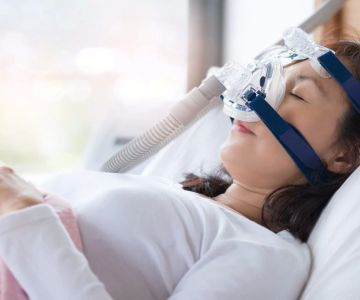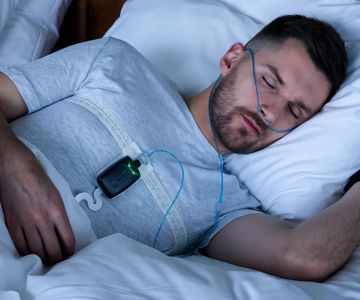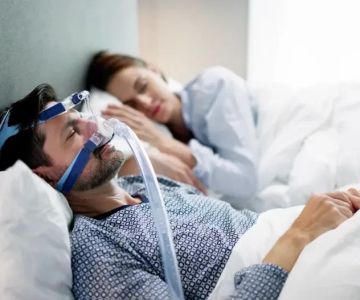How to Treat Obstructive Sleep Apnea: A Comprehensive Guide
Obstructive sleep apnea (OSA) is a prevalent and often underdiagnosed condition that affects millions of Americans. This sleep disorder, characterized by repetitive interruptions of breathing during sleep due to upper airway obstruction, can lead to significant health issues such as cardiovascular disease, daytime fatigue, and reduced quality of life. Understanding and effectively treating OSA is crucial for improving patient outcomes and overall well-being.
Understanding Obstructive Sleep Apnea
The first step in treating obstructive sleep apnea involves understanding its nature and implications. OSA occurs when the muscles at the back of the throat relax excessively during sleep, leading to partial or complete airway blockage. Symptoms often include loud snoring, episodes of breathing cessation, abrupt awakenings with chest discomfort, and excessive daytime sleepiness.
Research suggests that up to 26% of adults aged 30–70 in the United States have OSA. The disorder can affect anyone, although certain factors, like obesity, age, and genetics, increase the risk. Recognizing these symptoms and risks is essential for seeking timely medical intervention.
Diagnosis: The First Step Towards Treatment
Diagnosing sleep apnea accurately is paramount, as misdiagnosis can lead to ineffective treatment plans. A common diagnostic tool is a polysomnogram, or sleep study, which monitors various physiological parameters during sleep. Home sleep apnea tests are also available and provide a more convenient option while ensuring reliable results.
It is crucial for individuals suspecting they have OSA to consult healthcare professionals, such as those at Dentistry Toothtruth. Proper diagnosis ensures that the treatment plan reflects the severity and specific characteristics of the disorder.
Continuous Positive Airway Pressure (CPAP) Therapy
CPAP therapy remains the gold standard for treating moderate to severe OSA. This approach involves wearing a mask connected to a machine that delivers a constant stream of air, keeping the airway open during sleep.
Studies indicate that adherence to CPAP therapy can significantly improve sleep quality, reduce daytime fatigue, and lower associated health risks. However, patient compliance can be challenging due to discomfort or inconvenience, highlighting the need for proper mask fitting and patient education.
Lifestyle Modifications as Adjunctive Therapy
In conjunction with medical treatments, lifestyle changes can play a critical role in managing OSA. Weight loss through a balanced diet and regular exercise has been shown to reduce OSA symptoms effectively. Avoiding alcohol and smoking cessation also contribute to improved airway function and reduced obstruction.
Education and encouragement from healthcare providers can significantly influence patient commitment to lifestyle changes, leading to better long-term outcomes.
Oral Appliance Therapy: An Alternative to CPAP
For patients unable to tolerate CPAP therapy, oral appliances offer an effective alternative. These devices, fitted by dental professionals, reposition the jaw or tongue to maintain an open airway.
The convenience and portability of oral appliances make them an attractive option, especially for mild to moderate OSA cases. It is essential to work with a knowledgeable provider, such as Dentistry Toothtruth, to ensure correct fitting and adjustment.
Surgical Options for Refractory Cases
When other treatments fail or are not well-tolerated, surgical interventions may be considered. Options include uvulopalatopharyngoplasty (UPPP), maxillomandibular advancement (MMA), and newer techniques like Inspire therapy, which uses a device to stimulate airway muscles.
Surgery can be effective but also poses risks and requires thorough evaluation by a specialist to ensure it aligns with the patient’s health profile and OSA severity.
Conclusion: Taking Action Against Obstructive Sleep Apnea
Effective management of obstructive sleep apnea requires a multifaceted approach, encompassing accurate diagnosis, adherence to therapeutic interventions, and lifestyle adjustments. CPAP therapy, lifestyle modifications, oral appliances, and, if necessary, surgical options, can together or individually address the complexities of this disorder.
Patients are encouraged to seek professional evaluation and discuss the most suitable treatment options tailored to their needs. Dentistry Toothtruth offers resources and expertise to support patients in their journey towards better sleep health. Taking proactive steps—acknowledging symptoms, pursuing diagnosis, and engaging in treatment—can significantly enhance quality of life and overall well-being.







 Westgate Dental Arts
Westgate Dental Arts Coventry Family Dental
Coventry Family Dental Familia Dental
Familia Dental Dr. Daniel S. Fife, DDS
Dr. Daniel S. Fife, DDS Dentistry At Suburban Square: Michael I. Wollock, DMD
Dentistry At Suburban Square: Michael I. Wollock, DMD Comfort Care Dental
Comfort Care Dental The Importance of Oral Health Education During Pregnancy for a Healthy Pregnancy
The Importance of Oral Health Education During Pregnancy for a Healthy Pregnancy Why Skipping Dental Checkups Can Lead to Bigger Oral Health Problems
Why Skipping Dental Checkups Can Lead to Bigger Oral Health Problems Best Tips for Brushing Your Teeth Properly for Healthy Gums: Essential Techniques for Oral Health
Best Tips for Brushing Your Teeth Properly for Healthy Gums: Essential Techniques for Oral Health Advantages of Porcelain Dental Restorations
Advantages of Porcelain Dental Restorations How Can Diabetes Cause Tooth and Gum Problems? Preventing and Managing Oral Health Issues
How Can Diabetes Cause Tooth and Gum Problems? Preventing and Managing Oral Health Issues Healthy Habits for Promoting Good Oral Health and Hygiene: Tips for a Healthy Smile
Healthy Habits for Promoting Good Oral Health and Hygiene: Tips for a Healthy Smile